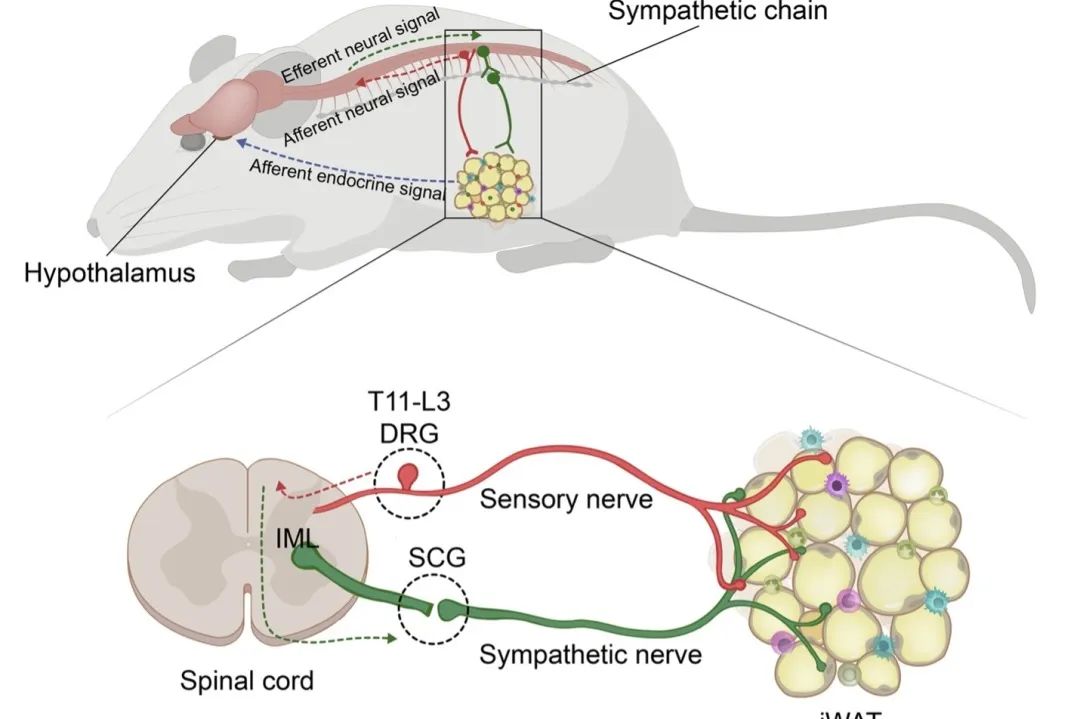White adipose tissue (WAT) communicates with the CNS bidirectionally. In recent studies, aided by three-dimensional imaging, Wang et al. and Frei et al. have provided the organ-wide view of the afferent somatosensory network in the inguinal WAT (iWAT) and have further delineated its critical involvement in energy balance.
White adipose tissue (WAT) is an essential metabolic organ for maintaining metabolic homeostasis. Adipose tissue can process large amounts of glucose from circulation by responding to hormones such as insulin. Energy is stored as lipids in WAT and consumed in response to stress conditions. For example, when facing a low temperatures, the CNS mobilizes lipid reservoirs and promotes thermogenesis via efferent motor sympathetic nerves densely innervating inguinal WAT (iWAT).
In parallel, the CNS, especially the hypothalamus, monitors the energy state of the periphery by sensing fat-derived substances in the blood, such as leptin, which functions as a caliber of fat mass. On the afferent branch, a few studies have probed somatosensory innervation of adipose and its associated functions.
The progress has been slow thus far possibly due to the limitations of available imaging and interventional techniques. In particular, it is difficult to preserve nerve integrity in adipose tissue slices across long distances, and surgical and pharmacological means for neural denervation bear significant off-target or off-tissue effects.
Recently, empowered by whole-mount imaging methodologies, studies by Wang et al. and Frei et al. have successfully visualized the somatosensory nerve network in iWAT and have further explored its metabolic roles (Figure 1).


Copyright © 2017 Institute for Immunology Tsinghua University
Contact Address: Room D302, Medical Science Building, Tsinghua University, Beijing 100084, China
Tel: (86) 10-62776420 Fax: (86) 10-62776420
